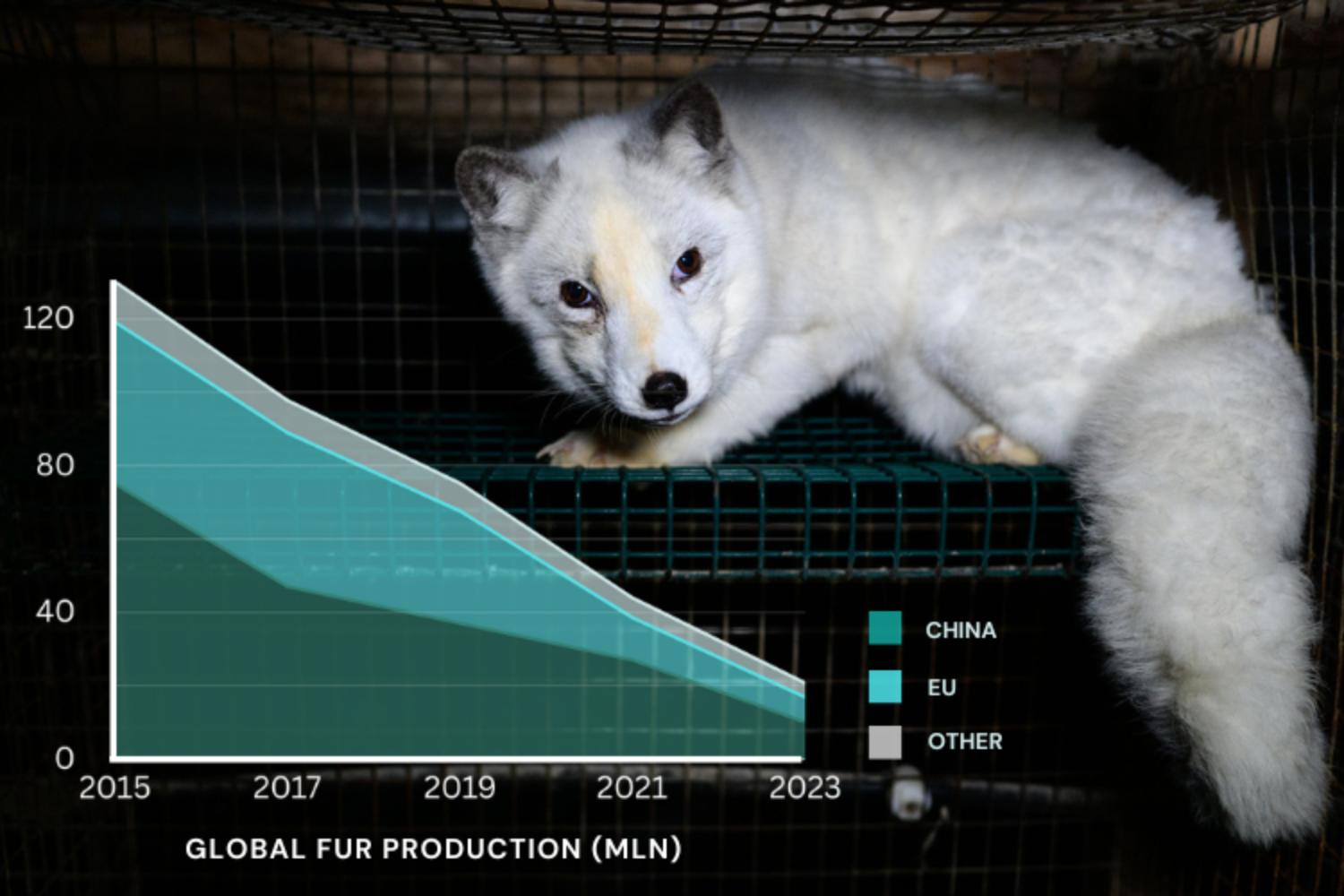The fur production sector has seen a collapse of 85% since 2015, with a reduction of 40% in 2023 compared to the previous year: a change that gives rise to hope

@Oikeutta eläimille
In the last few decades, the fashion industry has evolved extensively by slowly phasing out the use of animal fur. It is not an ephemeral craze but rather a result of heightened ethical sensitization and activism by activists, consumers, and governments.
According to figures by the Fur Free Alliance, global fur production saw a sharp decline, decreasing by 40% in 2023 compared to the previous year. Looking at the decade from 2015 to date, the industry has declined by 85%. This means millions of minks, foxes, and raccoons have been spared a life of suffering on fur farms.
Even China, the world’s top fur-producing nation, has seen a precipitous drop in production, with more than a 50% decline since 2022—a clear sign that change is happening on a world scale.
Numerous brands still use fur
At the same time, the fashion industry has responded to consumers’ demands for responsible options. More than 1,600 brands have chosen to go fur-free, including iconic brands such as Gucci, Armani, and Michael Kors.
This shift is an indication of growing care for the welfare of animals but also of a redefinition of luxury: today, exclusivity is increasingly associated with innovation and sustainability rather than the employment of animal-based materials.
But the problem remains unsolved. Some firms, such as Fendi, Louis Vuitton, and Woolrich, still use fur in their garments, and the global fur industry keeps inflicting harm on some 20 million animals every year.
Public campaigns have been a core aspect of this shift, educating the public about the inhumane aspects of the fur industry and calling for legislative change. Over a dozen nations are in discussions to impose fur production prohibitions.
The situation in the United States
The U.S. has also acted to prohibit fur. Several states, including California, have introduced prohibitions on the sale of fur, and big cities like New York have considered similar proposals. Additionally, most American department stores and retailers have committed to removing fur from their collections, reflecting the growing shift in consumer attitudes.
While a lot has been done, the war against fur is not yet won. Continued pressure on businesses and demands for stronger controls are required to put an end to this practice and ensure a future where fashion is entirely cruelty-free.
